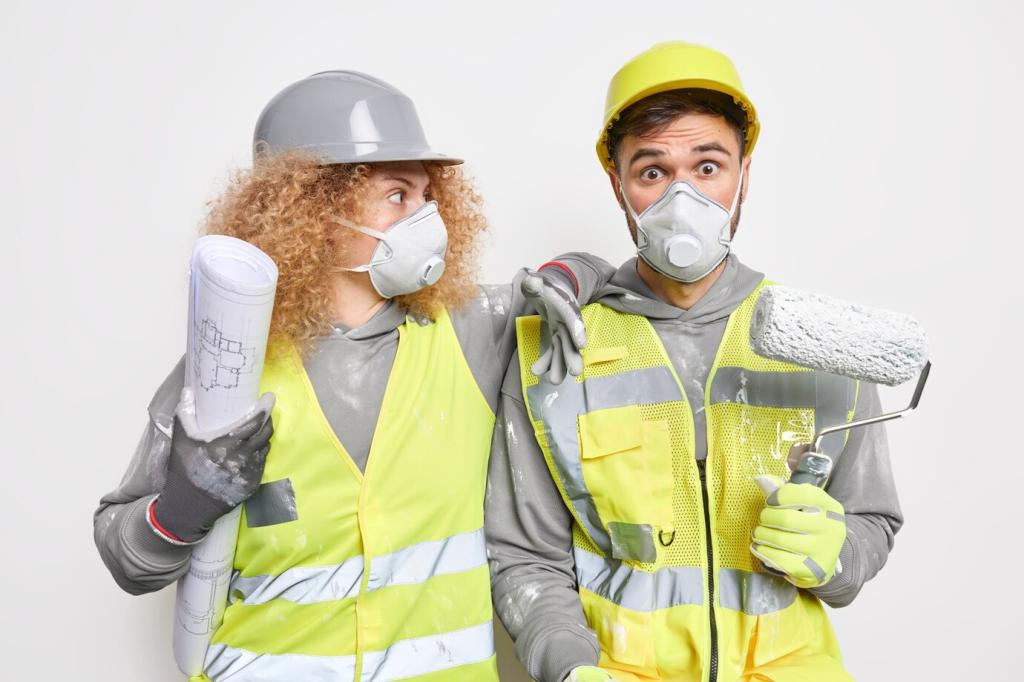
Evaluating Construction Quality of Home Safes: How to Recognize Real Protection
Chosen theme: Evaluating Construction Quality of Home Safes. This friendly guide transforms specs—steel thickness, weld integrity, door reinforcement, insulation layers, and ratings—into practical insights you can trust. Share your questions, subscribe for future deep dives, and help others choose safes that truly protect what matters.
Defining Construction Quality Beyond Marketing Claims
Many buyers focus only on steel thickness, but quality also depends on composition, forming, and bracing. Heavier steel helps, yet strategic bends, continuous ribs, and internal frames can stiffen panels dramatically. Ask manufacturers about material specs, not just gauge numbers, and compare real measurements rather than rounded claims.

Fire Protection Built Into the Safe
Gypsum layers release steam to slow heat rise, while concrete composites add thermal mass and rigidity. Ceramic fiber can block hot spots around doors and corners. The best designs combine materials and stagger seams to avoid conductive paths. Ask to see cross-sections or diagrams and verify actual layer counts, not marketing sketches.




Fit, Finish, and Quality Control Indicators
Uniform door gaps suggest precise fabrication and stable frames that will seal during heat or resist prying. Measure gaps on all sides, and confirm the door doesn’t rub or bind. Inconsistent gaps often expose warped bodies or rushed assembly. If you’ve spotted red flags in showrooms, comment to help others avoid them.
External hinges should feel smooth under load and show robust pins or bearings. Internal hinges remain hidden but must still support weight without sagging. Open the door fully and check for lateral play. Reinforced hinge bosses and backing plates signal thoughtful engineering, not cost cutting in unseen areas.
Quality finishes begin with proper surface prep—clean, degreased steel, then primer and durable topcoat. Powder coatings should be even, with no thin spots around edges or holes. Inside, look for treated surfaces to resist humidity. Tell us how your safe’s finish has aged; your long-term results can guide smarter purchases.
Stories From the Field: When Construction Quality Showed Up
A reader wrote after a fast-moving wildfire: staggered gypsum layers, dense door insulation, and expanding seals kept internal temperatures survivable. Contents suffered smoke odor but survived intact. Their lesson: layered, continuous fire construction matters more than a single impressive number. Share your recovery tips to help others prepare thoughtfully.
Your Showroom Inspection Checklist
01
Tools to Bring and Simple Measurements
Bring a magnet, calipers or a thickness gauge, a small flashlight, and a straightedge. Check edge returns, frame thickness, hinge robustness, and door gaps. Feel for flex under gentle pressure. These quick checks expose shortcuts fast. Share your field checklist in the comments so others can print and bring it.
02
Questions That Reveal Real Construction Choices
Ask for steel thickness on body and door, weld type, reinforcement details, and insulation composition. Request documentation for fire and burglary ratings, and photos of internal frames before cladding. Honest builders are proud to show construction. Post manufacturers’ responses here to build a community database of transparent answers.
03
Hands-On Tests That Don’t Damage the Safe
Open and close the door repeatedly, testing for smooth travel and consistent bolt engagement. Check that seals seat fully and hinges support weight without grinding. Lightly pry the door edge to feel structural rigidity. Your careful impressions—shared respectfully—help others learn what genuine quality feels like in person.
Anchoring Into Concrete and Load Distribution
Even the best construction fails if the safe can be tipped or moved. Use wedge anchors in solid concrete, oversized washers, and proper edge distances. Reinforced bottoms distribute load and resist prying leverage. Tell us what anchoring method you used and how the process went for your space.
Managing Moisture, Temperature, and Internal Materials
Quality bodies and coatings slow corrosion, but moisture control keeps interiors fresh. Use desiccants or dehumidifiers, and avoid placement near uninsulated exterior walls. Check liners and adhesives for aging. Share which humidity solutions worked for you so others can keep construction advantages intact for the long haul.
Maintenance, Upgrades, and When to Reassess
Periodically inspect seals, hinges, coatings, and bolt engagement for wear. Consider upgrades like better relockers, improved anchoring, or interior fire blankets if risk changes. If you outgrow your safe, prioritize stronger construction rather than only more space. Subscribe for update guides and community-tested upgrade paths throughout the year.

